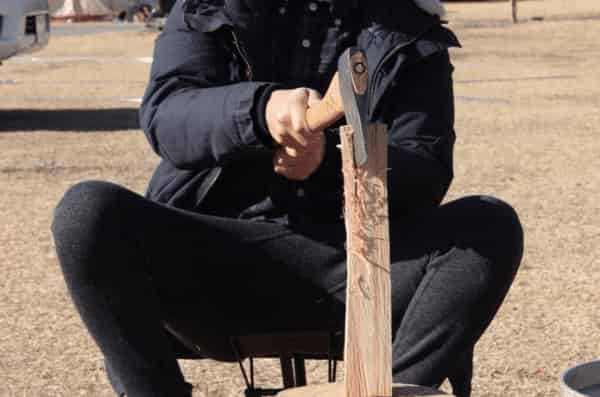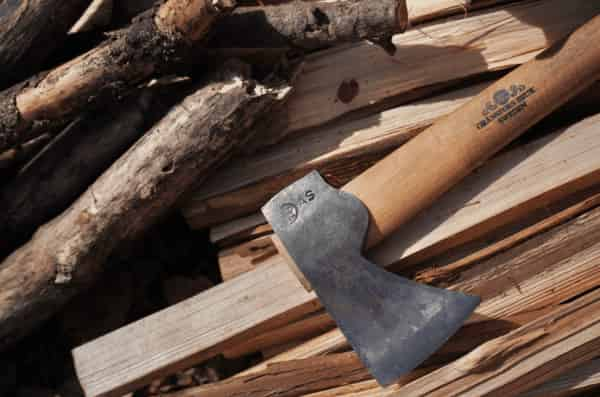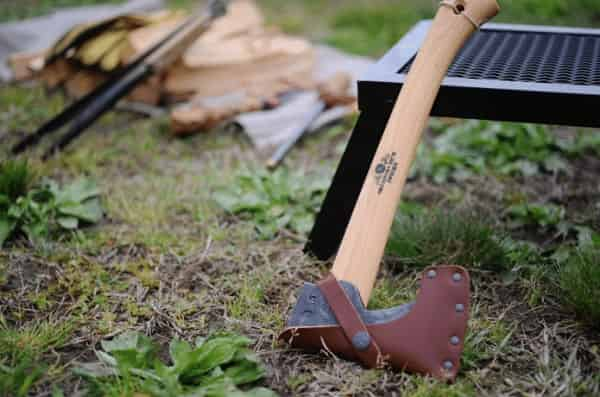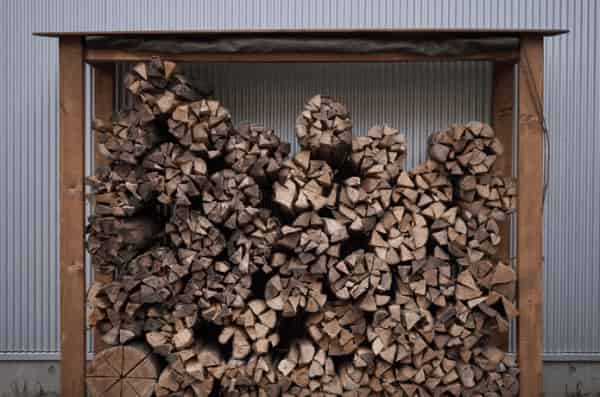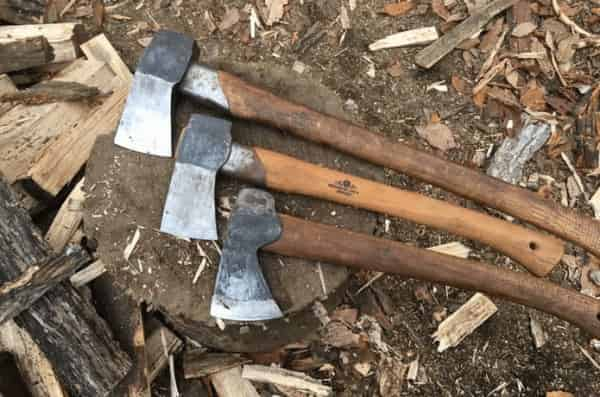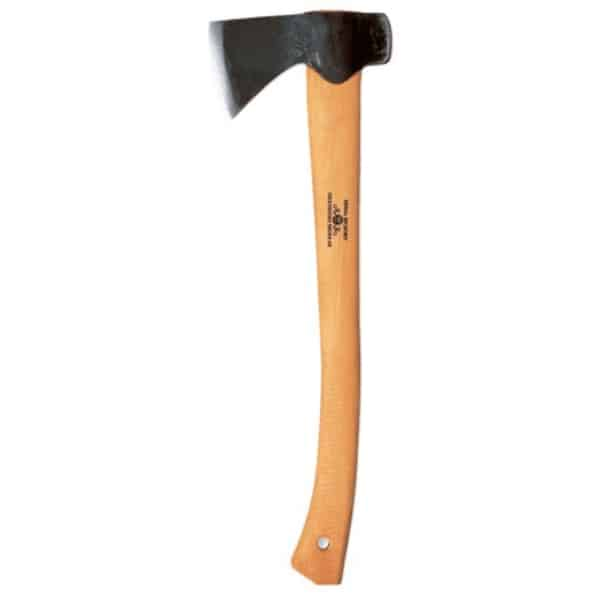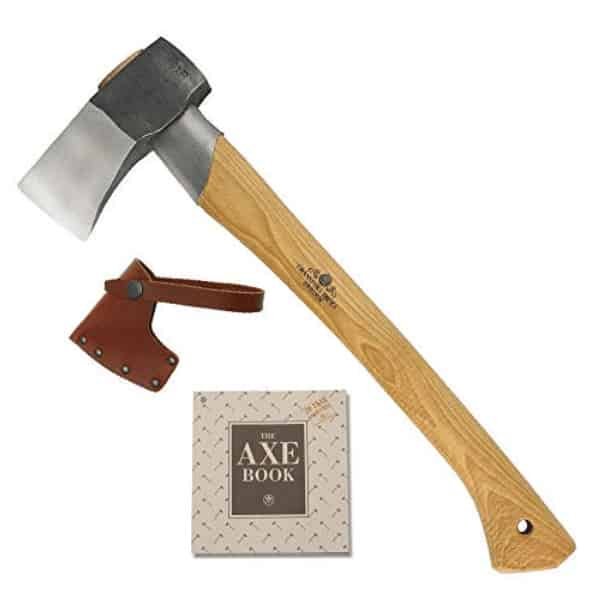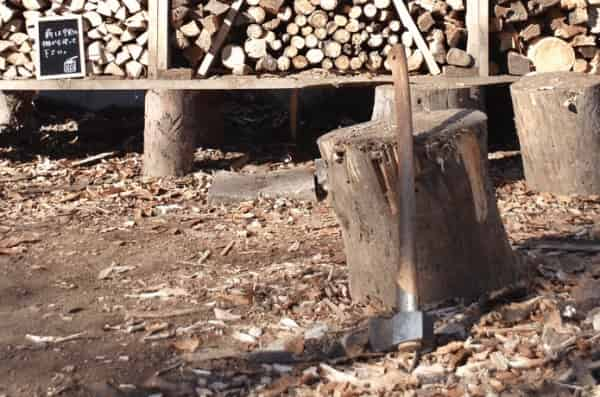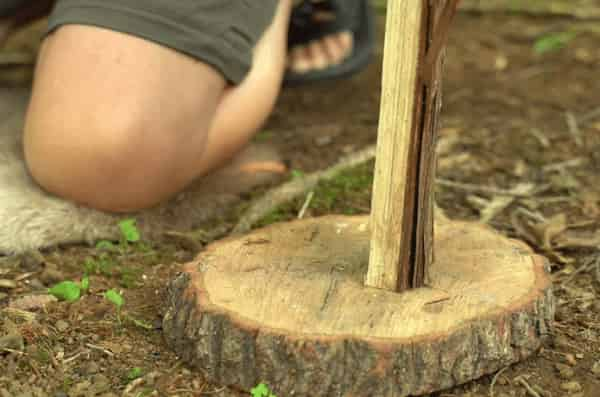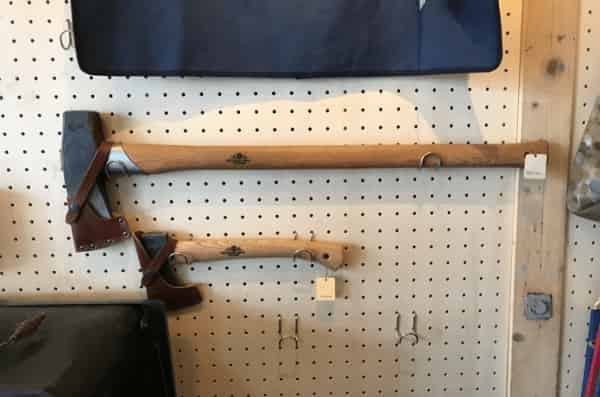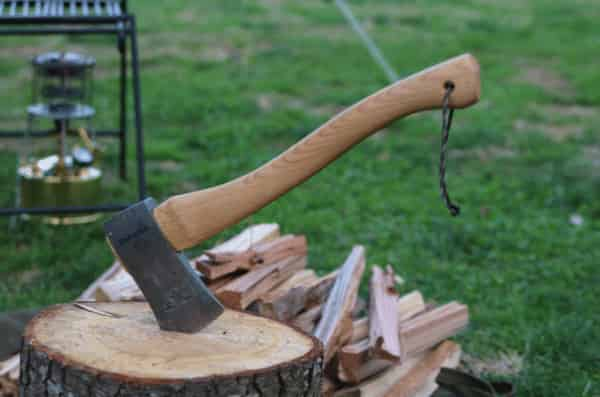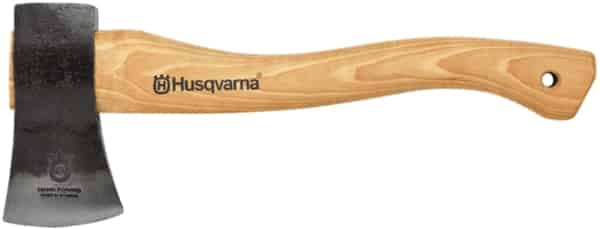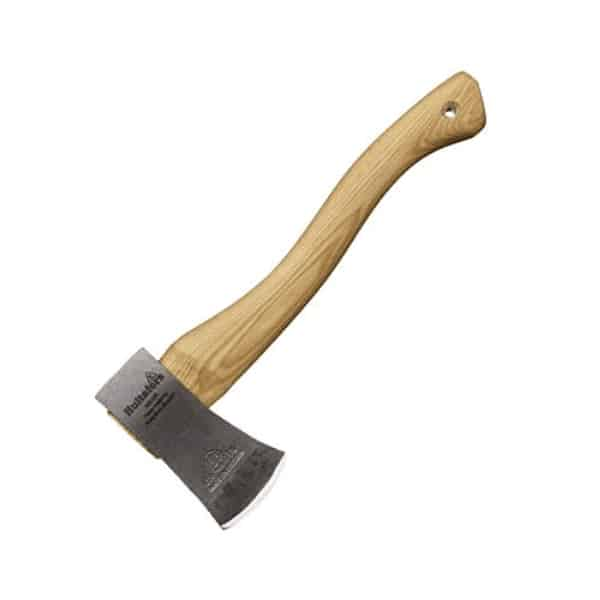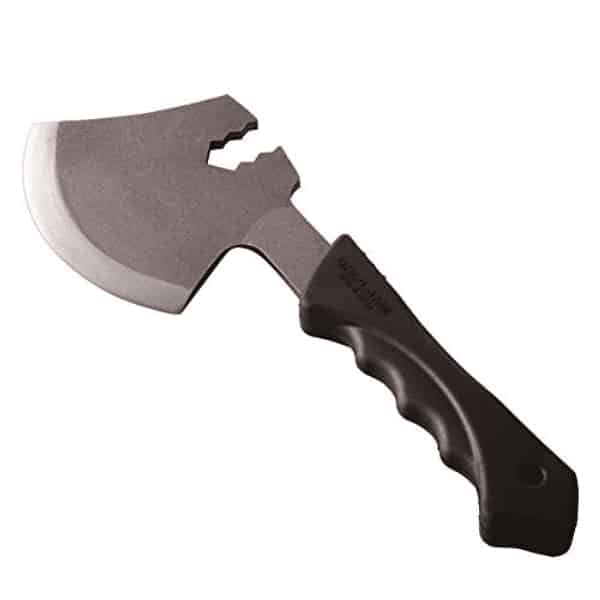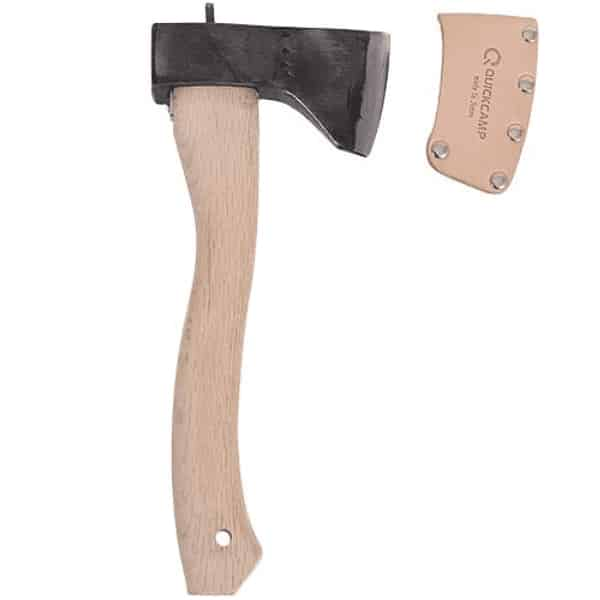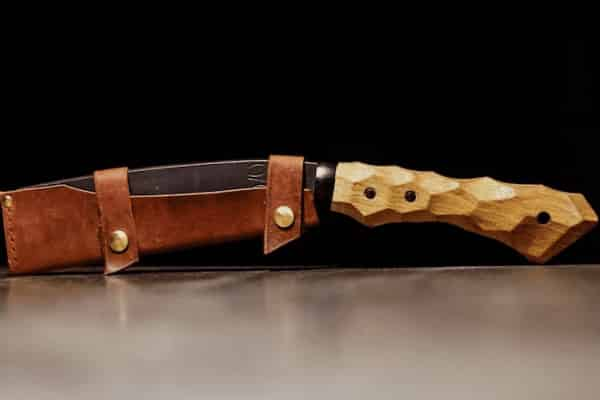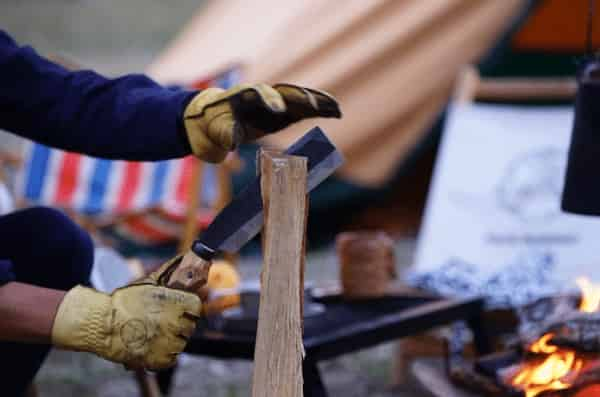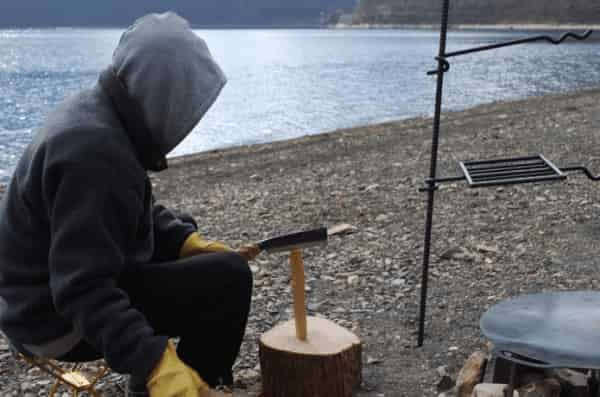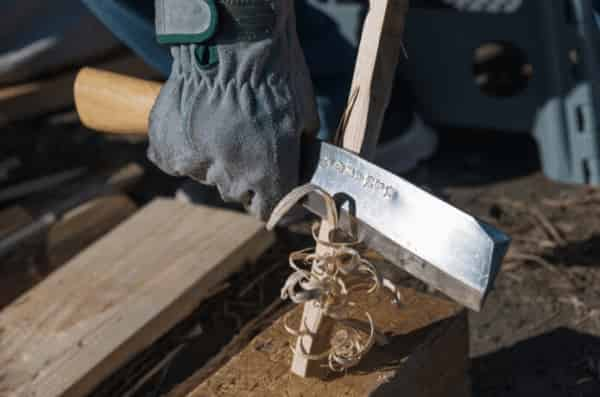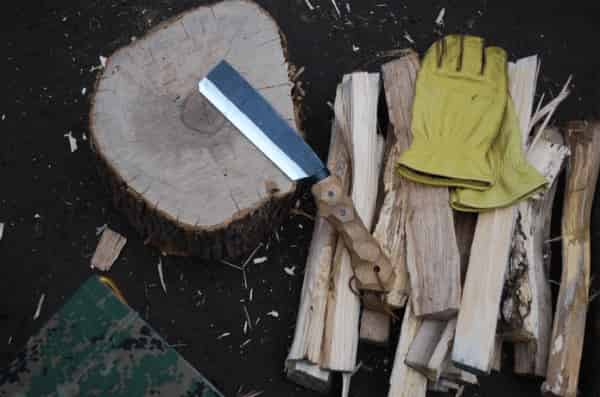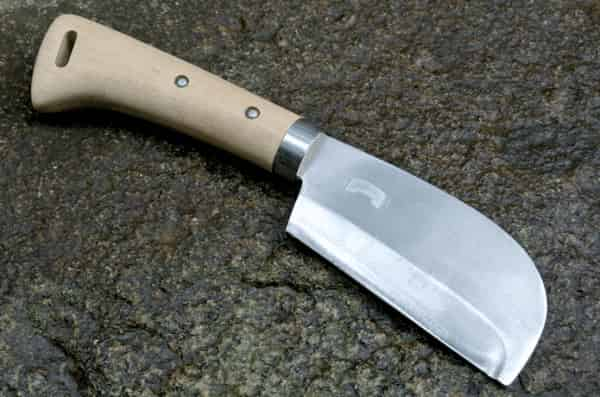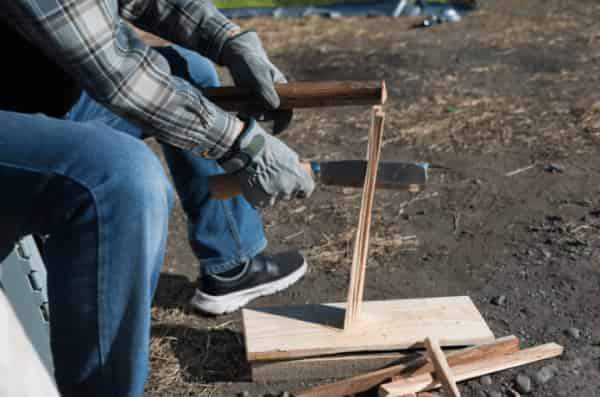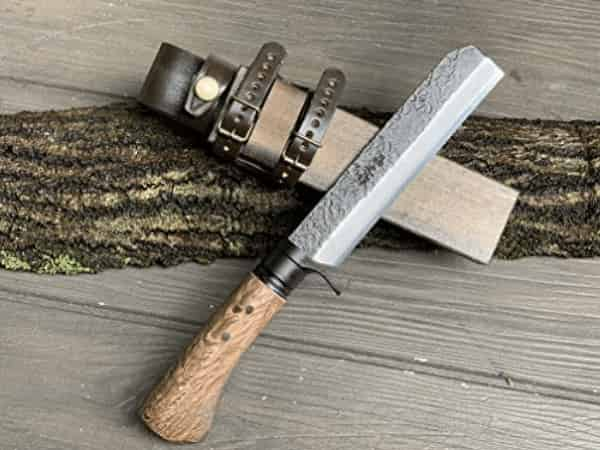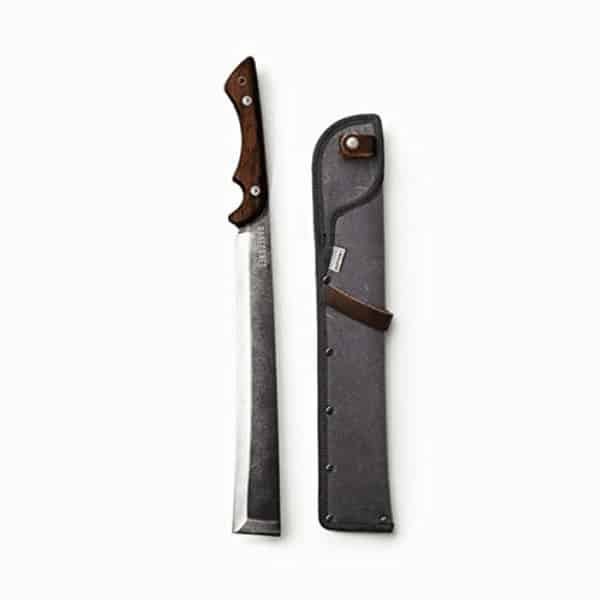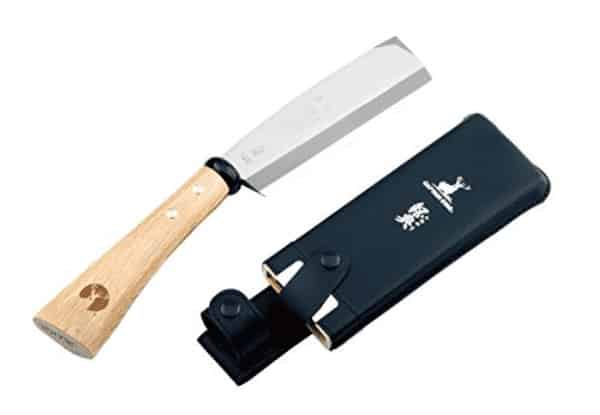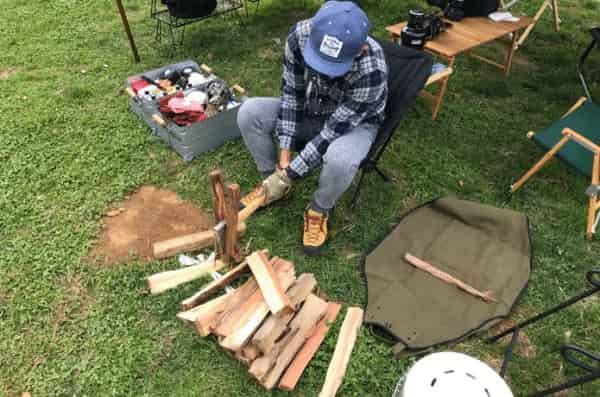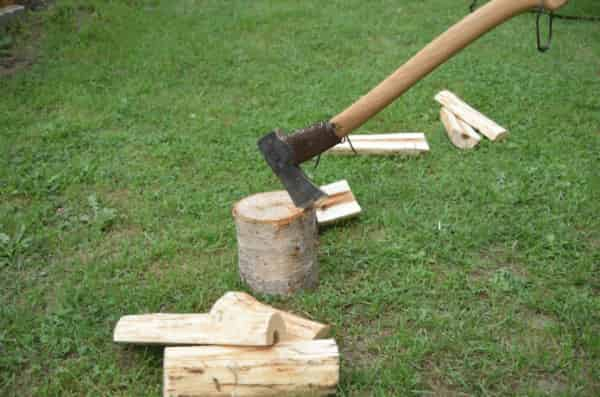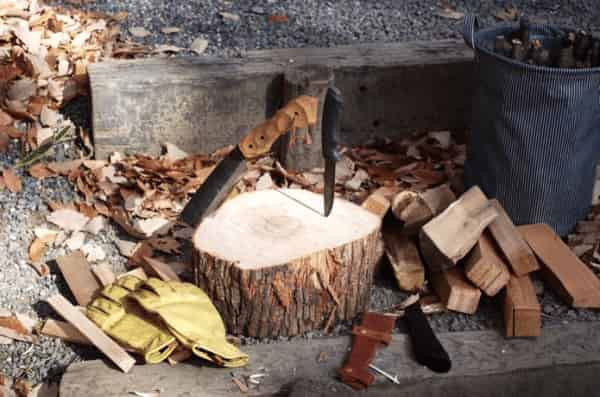A thorough feature on the differences between axes and hatchets, how to choose them, and recommendations! There are many people who see a camper chopping wood at a campsite and want to try it but don’t know which one to use. For such people, we will introduce the differences and features of the ax and hatchet, which are typical blades used in camping, based on the voices of users. You can see the difference that you seem to know but didn’t know.
What is the difference between an ax and a hatchet?
Axes and hatchets are the blades used for chopping wood, but since they are rarely used in daily life, many people may not know what the difference is and how to choose one.
Even if the ax and hatchet are the same blade, there are actually big differences in usability and usage.
So this time, let’s talk to two campers who often use axes and hatchets to learn the basic differences between axes and hatchets and what they are suitable for.
Before that, do you need an ax or hatchet?
For beginners, axes and hatchets have a sense of professionalism, but do you need them in the first place? Some people may be wondering. Before we get into the main subject, let’s check the basics!
Basic things to keep in mind before deciding whether to use an ax or a hatchet
Do you absolutely need an ax or hatchet for camping?
It’s not essential, and a small knife is enough. Rather, for households with small children, large blades can be dangerous, and firewood can be ignited as is with an ignition agent or gas torch without breaking it.
However, chopping wood with an ax or hatchet is one of the things that you can’t easily experience in a normal life. Also, learning the convenience and usage of tools after learning the correct usage and understanding the dangers should be a good experience for children.
Axes and hatchets are essential items for those who are gradually getting used to camping and are feeling “I want to do something new!”.
What is the difference between an ax and a hatchet?
Let’s first look at the basic differences. The ax has a thick and heavy blade attached to the tip of the handle, and its main role is to cut down trees and chop wood. There is a wide variety of sizes, from small ones that can be handled with one hand to large ones that can be held with both hands.
On the other hand, the hatchet is basically held with one hand and is characterized by a long blade length. It is used for a wide range of purposes such as dropping or cutting off branches from tree trunks, and even dismantling animals.
What you want to do at the camp with a knife is different for each person. In order to fully understand the characteristics so that you can choose according to the application, let’s talk about the advantages and disadvantages of each ax and hatchet user from here.
There is also an introduction of recommended products and the usability of your favorite items!
In the case of an ax
I have been acampamento for about 5 years and the number of nights per year is about 30 nights. The main fields are Yamanashi / Nagano and the area around Doshigawa / Mt. Fuji, and I enjoy camping solo and solo groups on weekdays.
Click here for your favorite ax!
At the camp, I want to enjoy the bonfire from chopping wood, so I use two types, Glens Fochbrooks “Hunter” and “Wood Chopper”.
Glens Fochbrooks Hunter
- Size: Ax head length / 15 cm, ax blade / 8.5 cm, total length 47.3 cm
- Material: Blade / Swedish steel Handle / Hickory
- Peso: 600g
Glens Foch Brooks Wood Chopper
- Size: Blade length / 68mm Handle length / 480mm
- Weight: 1390g
- Material: aço sueco
“Hunter” is mainly used for chopping wood for conifers and debranching of picked branches, and “Wood Chopper” is used for chopping wood for autumn leaves and breaking thin logs.
For those who love bonfires, blades are also an important tool. It seems that you are particular about choosing Glenfoss Brooks, a long-established Swedish blade maker that is hand-made one by one by a skilled blacksmith, and using two depending on the application.
What are the benefits of an ax? What kind of usage can you do?
The ax is superior to the hatchet in its extraordinary power. In the case of thick hardwood, a hatchet may not break, and a log-shaped ball can only be broken by a large ax.
Also, since I rarely use an ax in my daily life, I feel that it has a special feeling when I use it.
It feels very refreshing when the firewood breaks cleanly with an ax! Speaking of chopping wood, everyone imagines a “swinging and smashing scene”, which was actually a privilege granted only to an ax.
What are the disadvantages of an ax?
The disadvantage is that it is difficult to handle because many of the heads are heavy and relatively large. Besides, if it is a large one, it is not suitable for detailed work such as making a thin fire.
It’s big, heavy and powerful, but it seems unsuitable for detailed work. Whether you want to chop wood or custom feather sticks, it seems that the blade you should choose will change depending on the conditions around here.
In addition, due to the characteristics of the splitting method, a wood-splitting stand is required, and since broken firewood may scatter, sufficient consideration for the surroundings is also essential.
Whenever I use an ax, I always keep safety first.
The hatchet is the same blade, but the ax has a high risk of becoming seriously injured due to the large movement and impact. It seems that it is necessary to understand it well, not to have it with interest.
Next, let’s learn how to choose an ax to use in the camp!
What are the precautions for beginners when choosing an ax?
A large ax with a length of 60 cm or more is used when cutting down a tree or when breaking a “ball-cutting” that is made by cutting a fallen tree into a log shape, so it is not often used in ordinary camps.
However, if it is a small ax of about 20 cm, it will be coberto com uma faca or hatchet for various purposes.
If you are a beginner, we recommend a hatchet that is about 30 to 40 cm long and can be handled with one or both hands because it feels like an ax and is easy to handle.
In addition to the weight, the thicker the blade, the stronger the force to spread the firewood to the left and right, making it easier to split the firewood. If you want to prioritize the processing of wood, choose one with a thin blade and sharpness.
First of all, try using one that is easy to handle, and if you get used to it and want to try various things, try other ones.
Click here for other recommended axes
There are various axes in the price around tens of dollars, but first of all, I think the one that is affordable for $100 or less is good.
Recently, the number of outdoor shops that sell axes has increased compared to before, so it’s a good idea to ask the clerk at the shop.
jun_p_79’s favorite “Glens Fochbrooks Hunter” is reasonably sized, but the price is a little over $20. Based on the information I received this time, I picked up other recommended hatchets!
Husqvarna hatchet 38cm
- Tamanho: 38cm
- Weight: 0.6kg
- Material: Blade / Swedish steel Handle / Hickory
Hatchet of Swedish agriculture, forestry and landscaping equipment maker “Husqvarna”. This is recommended for beginners because it is relatively easy to obtain and inexpensive.
Hultafors Scout
- Tamanho: 38cm
- Peso: 900g
Affordable and easy-to-use hatchet made of high quality Swedish steel. The hickory pattern that tastes better as you use it is attractive, and it comes with a special sheath (case) to cover the blade.
Uniframe TSURUBAMI Tsubame Sanjo no Ax
- Size: Overall length / approx. 275mm Blade length / approx. 115mm Blade thickness / approx. 5mm
- Peso: Aproximadamente 450g
- Material: Blade / Carbon steel (S50C) Handle / EPDM (Rubber type)
Uniframe hatchet that is easy to handle with its compact size and thin blade. Since it has a groove for breaking twigs, it is also convenient when processing falling branches.
Quick camp bonfire hatchet
- Size: L30cm × H13cm × W2.6cm
- Blade length: 7.5cm
- Weight: Approximately 680g (ax head 450g)
- Materials: Ax head / SK4 carbon steel with hand-made interrupt steel Handle / Honkashi (domestic natural wood) Cover / Cow leather (Tochigi leather)
A pure Japanese ax that uses a blade made by a blacksmith who has a tradition of 500 years.
Now, let’s look at the opposing “machete”!
In the case of hatchet
Representative of the garage brand “edc design works”. A B-type camper whose motto is “If you don’t have what you want, make it” and stick to what you like.
@ Neru0414 will introduce the hatchet. As a user, of course, he will talk from a professional perspective unique to edc, who is also a maker of axes and hatchets.
Click here for your favorite hatchet!
I love “Nata kezuru” from my brand Nell Design Works. Although it is a hatchet, it is double-edged, so it is also suitable for chopping wood.
The favorite hatchet is an elaborate gem with a hand-carved grip attached to a blade hand-made one by one by the blacksmith of Tsubamesanjo. By the way, the word “double-edged” came out, but what does this mean?
Double-edged and single-edged
The hatchet has a double-edged blade and a single-edged blade, and the V-shaped blade called a double-edged blade is for the purpose of breaking firewood.
If you want to cut something, a checkered blade called a single-edged blade is suitable, so use it properly according to your purpose.
The blade of the hatchet has abundant shapes, and there is also the difference between a sword hatchet with a sharp point and a flat hatchet.
If you choose a hatchet for the purpose of chopping wood, a double-edged hatchet is suitable.
What are the benefits of hatchets? What kind of usage can you do?
If you want to break thick firewood, you need a heavy ax, but if you want to break the coniferous trees and thin firewood sold at the campsite, the hatchet is easier to use.
Compared to an ax, the blade length is longer than the diameter of the firewood, so you can break the firewood in a stable manner.
Also, detailed work such as removing branches and making feather sticks is definitely a hatchet rather than an ax. Its sharpness makes it usable for cooking, and it also has the advantage of being compact in size and excellent in storage.
You mentioned earlier that the ax is suitable for chopping firewood, but depending on the size of the firewood, the hatchet may be more suitable. It seems to have the advantage of being compact, easy to handle, and suitable for detailed work.
What are the disadvantages of hatchets?
Since the blade length is long and the weight is light, the force is dispersed and it is not suitable for breaking hard and large firewood.
In addition, many have the disadvantage that the blade is easily chipped because the blade edge is thinner than the ax.
Having power and being able to do detailed work is a trade-off relationship. That perspective is likely to be a big deciding factor in which one to choose.
What are the precautions for beginners when choosing a hatchet?
If the hatchet blade is batoned with a metal such as a hammer (striking the back of the knife to break the firewood), the back of the blade may be deformed. Even if it is a tree, if it is excessively batoned, the handle may crack.
It’s a good idea to check if the handle can be replaced in case of such a situation.
If you hit the cutting edge against the ground when chopping wood, or if you stab the cutting edge into the wood chopping table, the cutting edge may chip (chip).
There is a hatchet with a thick processing called “chopsticks” on the cutting edge that does not have a tip, so if you are worried, we recommend that you choose such a hatchet.
Even if it is made of metal, it may be damaged or damaged, so I want to understand how to use it correctly and treat it carefully. It is safer if the product has a solid after-sales follow-up such as parts replacement and repair.
Other recommended hatchets
A major feature of the hatchet, which is different from the ax, is that it can be a versatile tool. If you want to use it for a wide range of purposes such as cooking and bushcraft, it’s a good idea to consider the size when you hold it.
Neru’s favorite “Nata kezuru” is made-to-order and is a fairly rare product with a delivery time of 6 months to 9 months. There are also hatchets that you can easily buy at outdoor shops and mail orders.
Toyokuni Forging Factory Tosa Keiryu Hatchet
- Size: Blade length / 150mm Overall length // 290mm
- Formato da lâmina: Dois gumes
- Peso: 380g
- Material: Handle / Sheath Kashi Oil Stainless / Wood Sheath Oil Stainless Leather Band
A double-edged hatchet with a blade length of 15 cm and a standard size that is easy to handle. Perfect for chopping coniferous wood and making fire.
Barebones Living Japanese Ax 2.0
- Size: Approximately 49 cm x Approximately 2 cm x Approximately 5 cm
- Formato da lâmina: Dois gumes
- Weight: Approximately 1.02 kg
- Material: Blade / Stainless steel handle / Walnut
The American brand “Barebones Living” is inspired by the hatchet. The appearance is also stylish, such as a hardwood pattern with a walnut finish.
Adventure Club (BOHKEN CLUB) Natatoko Small
- Size: hatchet / total length 350 mm, blade 165 mm, saw / total length 340 mm, blade 180 mm
- Formato da lâmina: Dois gumes
- Weight: hatchet / 380g, saw / 90g
- Materials: Sayanata / steel, oak, pruning saw / steel, beech wood, storage case / synthetic resin, synthetic leather
The great cost performance that you can buy with a saw for less than $30. Great for beginners!
Captain stag hatchet
- Size: Overall length 310mm, blade length 150mm, handle 150mm
- Formato da lâmina: Dois gumes
- Weight: 350g
- Materials: Blades / Carbon steel for blades Handle / Natural wood (oak)
The tip of the blade has chopsticks to prevent it from chipping, so it is recommended for those who want to avoid chipping the blade.
I have looked at the characteristics of axes and hatchets based on the advice of heavy users, but in conclusion I have summarized what purpose each is suitable for.
To summarize: Ax and hatchet are recommended for people like this
- Large blades are only used for chopping wood
- I want to break it with hardwood and thick firewood.
The hatchet is suitable for such a person
- Use pre-cut firewood
- I want to custom branches and feather sticks for burning, and enjoy various processing using firewood and branches.
From this difference, you can see again that each person can enjoy various ways even if it is called a bonfire.
Although axes and hatchets make camping fun like this, they are still dangerous goods. Let’s also know the precautions for safe use!
Precautions when handling blades in the camp
Wear gloves
The blade may hit your hand or arm and cut it off. Protect your hands with thick gloves such as leather and use with caution so that the fun camp will not be a bad memory.
Don’t do it near people
Especially in the case of an ax, firewood may scatter in a broken beat. In addition, it cannot be said that the blade will not slip out of your hand and fly away. Be careful of your surroundings so that you do not hit people and injure them.
Don’t leave it in the car
Possessing a knife for no legitimate purpose can result in police arrest for violating the Firearms and Swords Act. Not only do you have it, but it is the same even if it is loaded in the car and found in the car for some reason, so be sure to remove it from the car as soon as you return from the camp.
As long as you understand it, you won’t have much trouble, so I want to acquire knowledge and use it correctly.
Choose an ax and a hatchet according to how you want to use them.
Even though they are the same blade, they have their own unique axes and hatchets. Make sure you have an image of what you need, including the style of chopping wood, and choose the type that suits you!
Clique para ter mais Shieldon ar livre facas e ferramentas EDC diversão.
Shieldon、Facebook、Instagram、YouTube、Twitter、tumblr、pinterest

